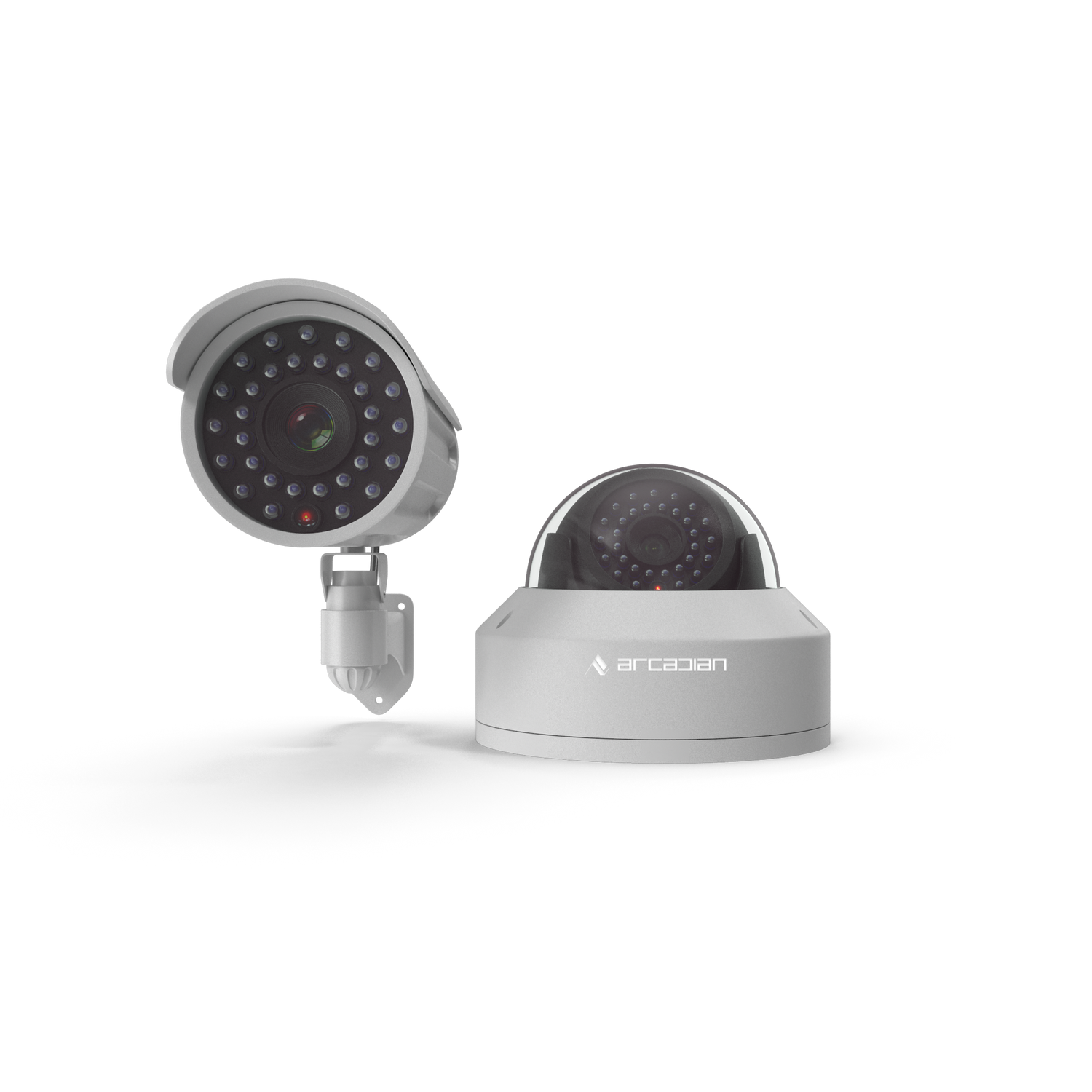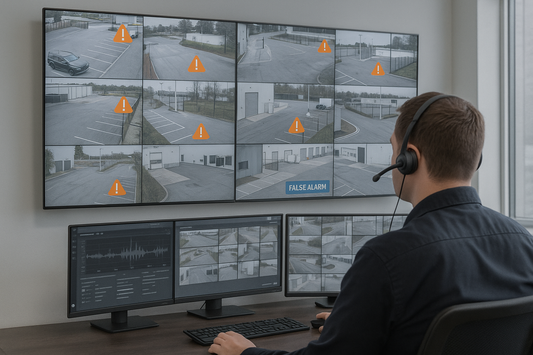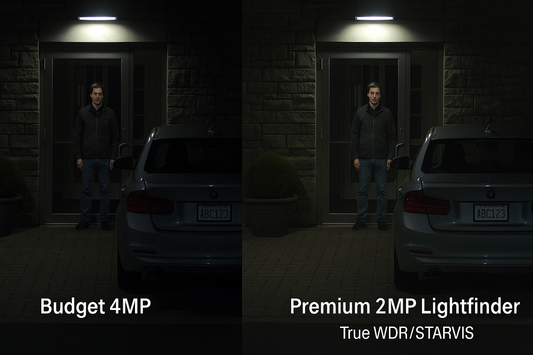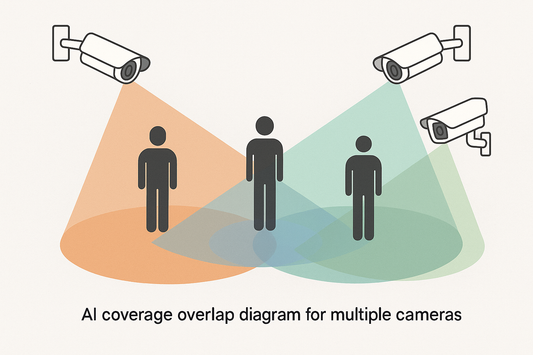Introduction: The Hidden Costs of Traditional Systems
When it comes to security monitoring, many businesses face a choice between traditional NVR (Network Video Recorder) or DVR (Digital Video Recorder) systems and modern cloud-based security cameras. On the surface, NVR/DVR systems may seem more economical due to their one-time hardware costs. However, these systems often come with hidden expenses that stack up over time.
In contrast, cloud security cameras offer a scalable, cost-effective alternative with a predictable subscription model. In this blog, we’ll break down the financial and operational advantages of cloud-based systems, showing why they save you money and give your business greater flexibility.
1. Upfront Costs: The Price of Traditional Systems
The Cost of NVR/DVR Systems:
-
Hardware: NVRs or DVRs typically cost $500–$2,000 for mid-range systems, excluding cameras. High-quality models can reach $5,000+.
-
Cameras: Analog cameras (DVR) cost $50–$300 each, while IP cameras (NVR) range from $100–$600 per camera.
-
Storage: On-premises storage solutions require hard drives, with costs ranging from $200–$1,000 per drive, depending on capacity.
-
Installation: Professional installation can cost $1,000–$5,000 for a small business setup.
Cloud Cameras Save Upfront:
With cloud-based security systems:
-
No expensive recorders: The cloud replaces the need for NVR/DVR devices.
-
Lower upfront camera costs: Many cloud systems are camera-agnostic, meaning you can reuse existing cameras or choose from a wide price range.
-
Minimal installation: Wireless setups reduce professional installation costs significantly.
Example:
A retail store with 10 cameras could spend $10,000–$15,000 upfront on a DVR/NVR system versus $2,000–$5,000 to deploy cloud-based cameras.
2. Hidden Costs of NVR/DVR Systems
1. Maintenance and Repairs:
- NVR/DVR hardware is prone to wear and tear, with replacement costs for devices or hard drives every 3–5 years.
- Downtime during repairs or replacements can lead to lapses in security.
2. Scaling Limitations:
- Adding more cameras often requires upgrading the recorder or storage capacity, with costs ranging from $500–$2,000.
- Cloud systems, in contrast, allow unlimited scaling without major hardware changes.
3. Software Updates:
- Traditional systems often require manual software updates, which may need IT support, increasing operational costs.
- Cloud platforms update automatically, ensuring you’re always protected with the latest features.
3. Subscription Costs Aren’t the Enemy
Breaking the Misconception:
Many businesses hesitate to adopt cloud systems due to the perception that monthly fees add up. However, these fees provide predictable costs that replace maintenance, repair, and storage expenses associated with NVR/DVR systems.
How It Pays Off:
-
Flexibility: Cloud subscriptions can start as low as $20 per camera per month, and you can cancel anytime.
-
Reinvest Savings: Instead of spending thousands upfront, businesses can allocate funds to growth or inventory.
-
Tax Benefits: Monthly fees are operating expenses, which are often deductible.
Example Calculation:
- A DVR system costing $12,000 upfront becomes a sunk cost.
- A cloud system at $20/camera/month for 10 cameras costs only $2,400/year—giving you 5 years of service for the same cost as upfront NVR/DVR hardware.
4. Operational Efficiency and Reduced Downtime
Why NVR/DVR Systems Fail:
- If the recorder malfunctions, the entire system can be rendered useless until repairs are made.
- On-site storage systems are vulnerable to theft, fire, and water damage, leading to irrecoverable losses.
Cloud Systems Eliminate Downtime:
-
Redundancy: Video footage is stored in multiple secure data centers, ensuring no data loss.
-
Remote Monitoring: Access live feeds and footage from any device, anywhere in the world.
-
Quick Recovery: If cameras are damaged, footage remains intact and accessible.
Stat: Businesses with cloud systems experience 50% fewer security disruptions compared to those using NVR/DVR systems (Source: Forrester).
5. Advanced Features Without Additional Costs
Limitations of NVR/DVR Systems:
- AI features like motion detection, facial recognition, and object detection often require separate software or hardware upgrades.
- Many DVR systems cannot support high-resolution cameras or advanced analytics.
Cloud Advantage:
Cloud systems come with built-in AI capabilities, such as:
-
Motion-Based Alerts: Receive notifications for unusual activity.
-
AI-Powered Analytics: Identify loitering, theft, or restricted area breaches.
-
Facial Recognition: Flag unauthorized personnel in real time.
Example:
A retail chain reduced false alarms by 30% using cloud analytics, saving hours of manual footage review.
6. Long-Term ROI: More Than Just Savings
Maximized Value:
-
Scalability: Scale up or down based on your needs without worrying about hardware limits.
-
Future-Proof: Cloud systems receive regular updates, ensuring compatibility with the latest technology.
-
Adaptability: Ideal for businesses with seasonal changes or evolving security requirements.
Real-World Impact:
A warehouse saved $10,000 annually in maintenance and storage costs by switching from NVR systems to a cloud-based setup, reinvesting the savings into employee training and inventory management.
Comparison Table: NVR/DVR vs. Cloud Cameras
| Feature |
NVR/DVR Systems |
Cloud Security Cameras |
| Upfront Costs |
High (hardware, installation) |
Low (minimal hardware required) |
| Maintenance |
Recurring (repairs, upgrades) |
Included in subscription |
| Storage |
On-site, vulnerable to damage |
Encrypted, redundant cloud storage |
| Scalability |
Limited by hardware capacity |
Virtually unlimited |
| Advanced Features |
Requires additional hardware |
Built-in AI and analytics |
| Accessibility |
On-site only |
Remote, 24/7 access |
7. The Real Cost of Doing Nothing
Sticking with NVR/DVR Costs You More:
-
Downtime Losses: An hour of system downtime can cost retail businesses up to $2,000 in lost sales and productivity.
-
Missed Opportunities: Traditional systems can’t leverage AI for theft prevention or customer analytics.
-
Security Gaps: On-site storage risks data loss during theft or disasters.
Conclusion: Cloud Security Cameras Are the Smarter Choice
While NVR/DVR systems may seem like the cheaper option upfront, their hidden costs quickly add up, making them less viable in the long run. Cloud security cameras provide predictable costs, scalable solutions, and advanced features that traditional systems can’t match.
Ready to make the switch?
👉 Contact Arcadian.ai today and discover how our cloud-based security solutions can save you money and future-proof your business.
Visit Us on Social Media
💼 LinkedIn
🌐 Facebook
📸 Instagram
🎥 YouTube
🎬 TikTok
🐦 X









